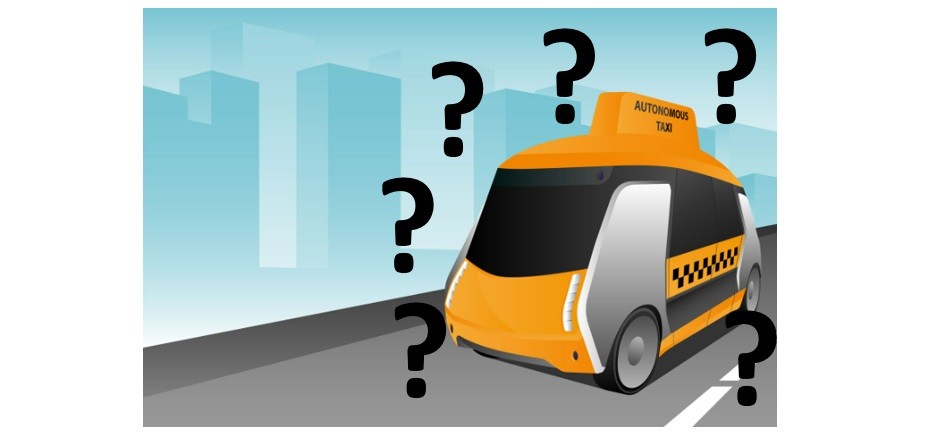
For some reason the obsession with robotaxis persists throughout the world and throughout the transportation industry. The collective conventional wisdom appears to be that getting rid of the human drivers of taxis and letting these vehicles freely operate presumably around the clock will save money and the environment.
Tesla’s Q2 earnings report puts the lie to this ill-placed optimism. While robotaxis are putt-putting around Phoenix, San Francisco, and Shanghai, human driven Teslas have notched 35M miles in “full self-driving” (FSD) Beta mode, according to CEO Elon Musk.
Musk says on the earnings call that FSD Beta with City Streets driving capability has been deployed to more than 100,000 Tesla owners. Commenting on the latest SmartDrivingCars podcast, Princeton’s Faculty Chair of Autonomous Vehicle Engineering Alain Kornhauser expressed his admiration for Tesla’s ability to recruit human drivers (i.e. Tesla owners) to help teach the computers how to drive. Kornhauser went further, estimating the value of the 35M miles of computer-assisted driving to be approximately $100M to Tesla at $3/mile.
Kornhauser is zeroing in on the critical differentiator between Tesla and every other autonomous vehicle developer. By deploying autonomous or semi-autonomous or self-driving technology in privately owned vehicles, Tesla is allowing the humans to teach the computers how to drive.
Musk and Tesla understand that humans are good drivers, in spite of getting a bad rap. Roads from city streets to highways were designed for human operation, so it makes sense to leverage human driving skills to refine the algorithms and fuel the neural networks that are ultimately expected to take over.
In contrast, robotaxis are operating based on rules-based assumptions and a see-plan-act “mindset” that must simultaneously anticipate and react to its driving environment. Robotaxis are essentially being asked, without much help, to understand how humans drive while being mindful of obeying the driving rules.
It’s a hopeless task with little prospect of short-term success. For these and other reasons Waymo is operating in the desert – to eliminate weather concerns – and Cruise Automation is operating at night – to mitigate issues around traffic congestion.
The nearly impossible objective of achieving full self-driving, long-promised by Tesla, is more likely to be achieved by Tesla because of its decision to keep the human “in the loop.” Robotaxis operate on the assumption that the human is the problem – the fly in the self-driving ointment.
This isn’t the only flawed assumption. The second flawed assumption is that robotaxis operated by computers that never become drowsy or tired will be more efficient and therefore lead to reduced emissions and energy consumption.
Based on Waymo’s Q2 data gathered from its operations in California, 92% of the vehicle miles traveled by Waymo vehicles were spent “loitering.” Only 8% of Waymo’s Q2 VMT was consumed carrying passengers or en route to pick up passengers.
The only possible justification would be that the pursuit of robotaxi development is expected to yield valuable insights into solving as yet unidentified transportation challenges. Color me skeptical.
Robotaxis are already having a deleterious impact on urban transit with notable traffic jamming incidents instigated by Cruise in San Francisco. But it is not just the catastrophic failures that are relevant. Robotaxis operated by Cruise and others around the world are adding their own quirks to the existing urban transportation chaos which is still evolving – post-COVID – to accommodate e-bikes and e-scooters, a proliferation of delivery vehicles, delivery drones, and ever-present pedestrians.
Robotaxis are also guaranteed to be more expensive to operate than taxis, while driving more slowly, and lacking the flexibility to travel beyond the city limits via highways.
Yet, for the time being, developers will continue to throw hundreds of millions of dollars (Cruise has a nine-figure quarterly cash burn rate) at robotaxis to solve a problem already adequately addressed by public transit and traditional taxis. Robotaxis are and will continue to be more expensive to operate, slower, more polluting, with a limited operational design domain, and a fundamental inability to equal or surpass existing human driving acumen.
Other than all of that, robotaxis make perfect sense. Send in the clowns.
Also read:
Wireless Carrier Moment of Truth
DSPs in Radar Imaging. The Other Compute Platform
Accellera Update: CDC, Safety and AMS
Share this post via:







Quantum Computing Technologies and Challenges